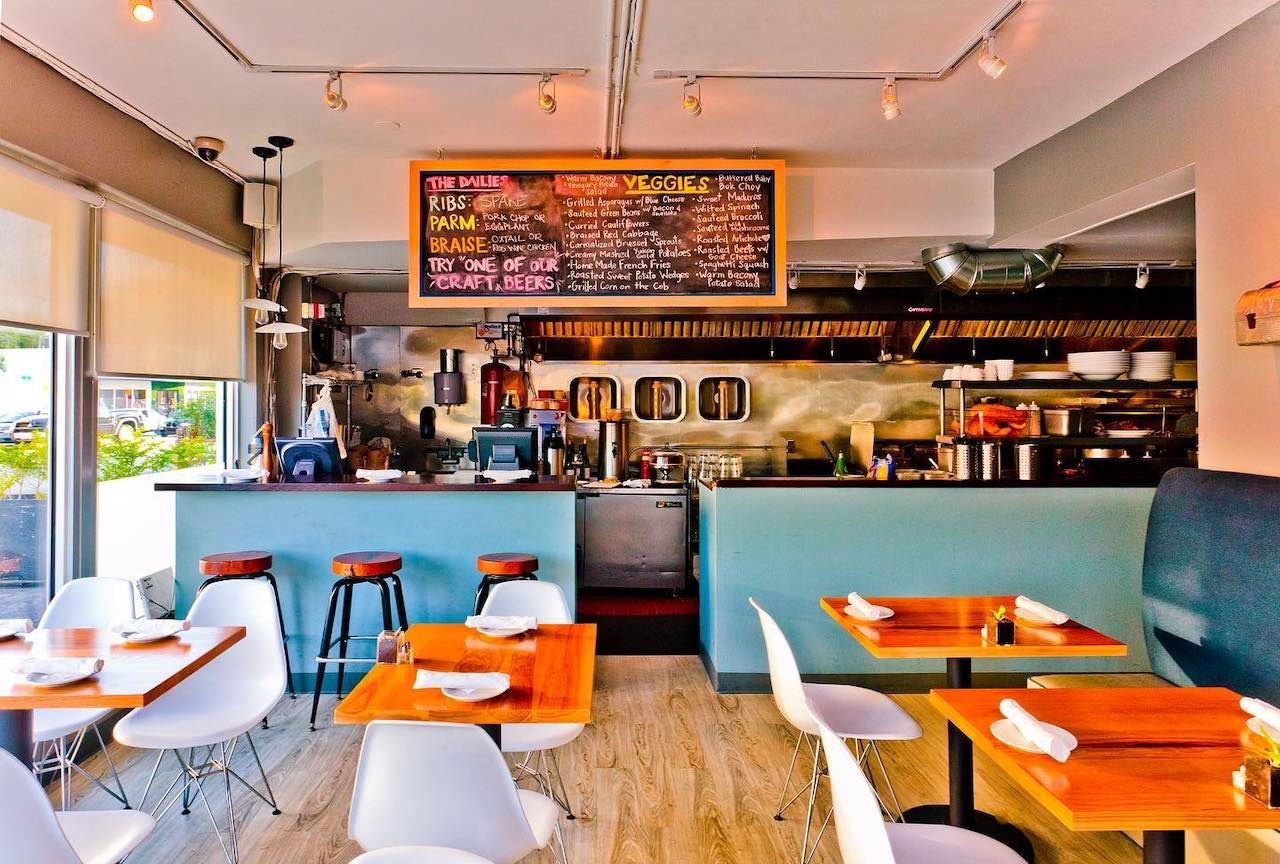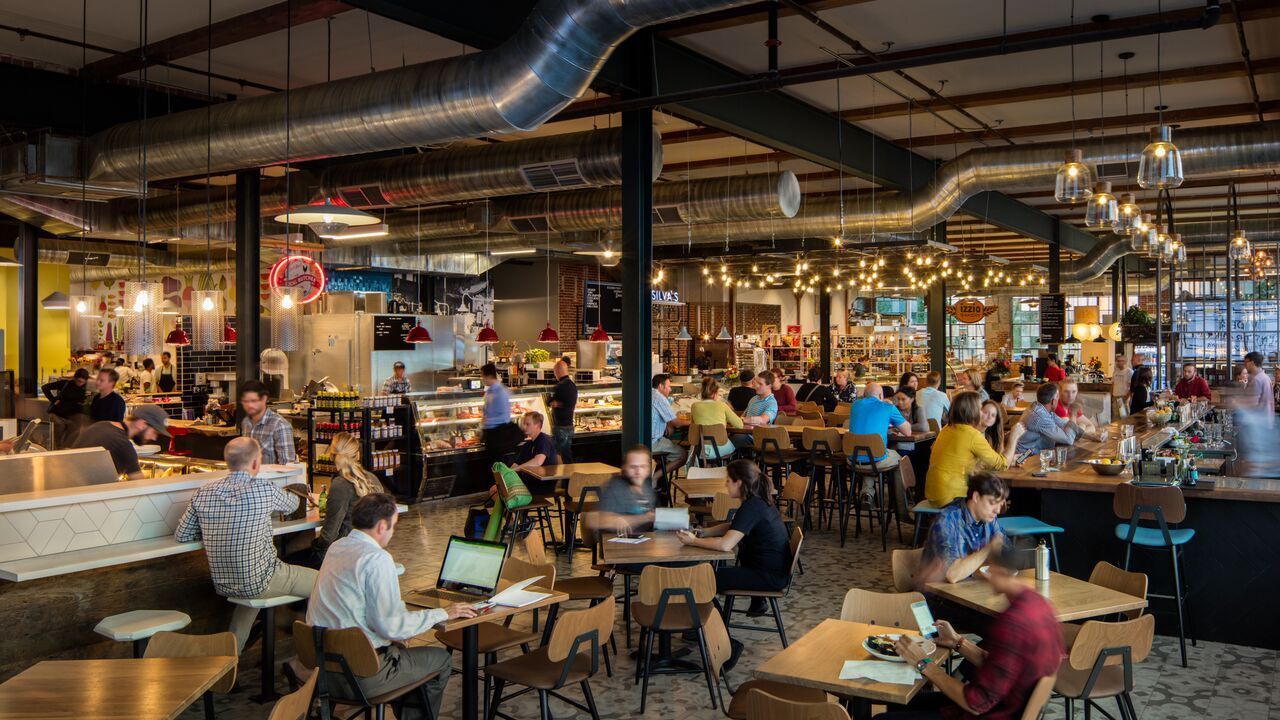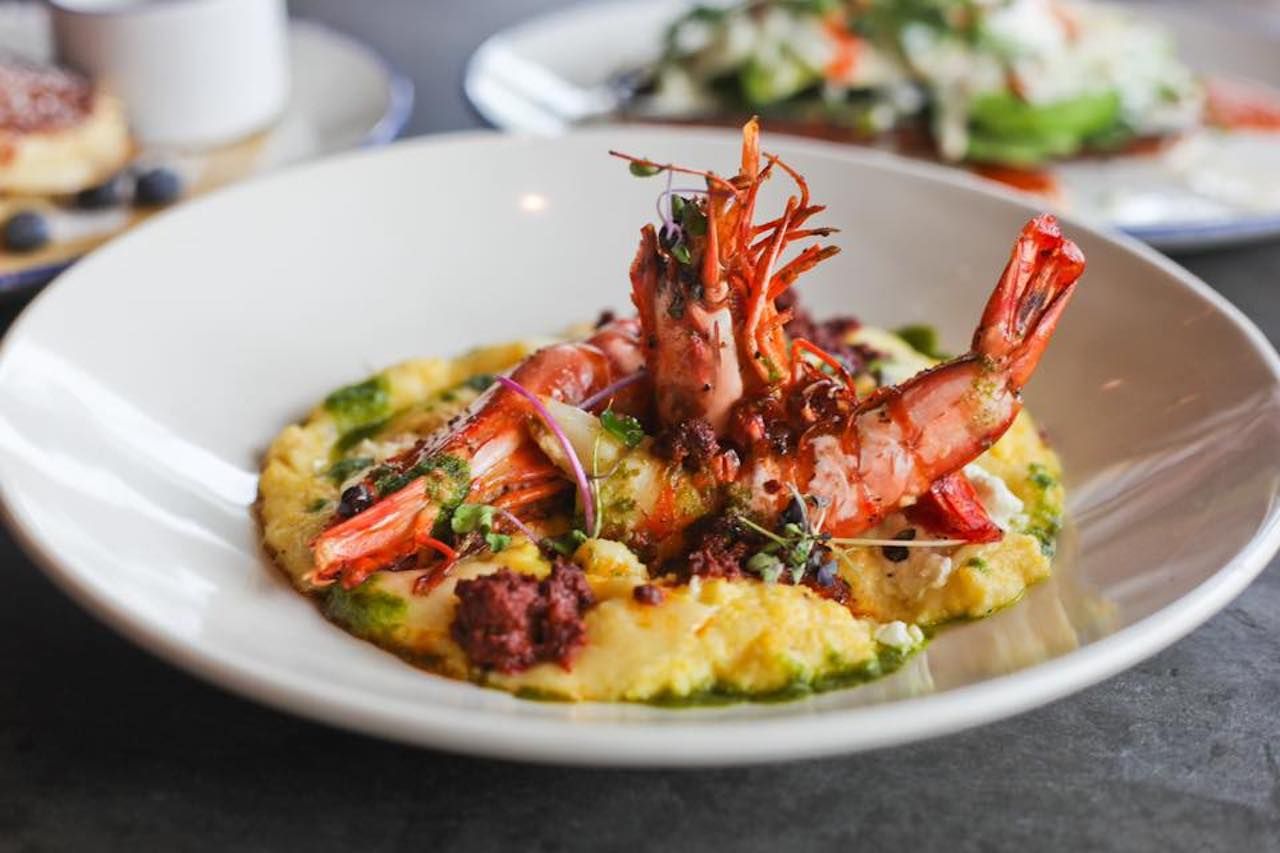Planning a vacation involves a complicated mental calculation. Before settling on a destination, you have to consider the beauty, the historical landmarks worth visiting, and what outdoor activities there are. For people who love to eat, however, one consideration takes precedence over all the others: the local cuisine. Travel doesn’t have to be all about food, but it’s often the best part of visiting a new city.

Our Favorite Food Cities of the Past Decade
One of the biggest travel trends of the past decade — one that is sure to extend into the next — is visiting a region on the strength of its food and restaurant culture alone. New Orleans, Chicago, and Los Angeles are stalwarts, easily claiming the title of best food cities in the country year after year. But these well-trod cities just scratch the surface when it comes to the best places to eat.
Matador Network’s staff is on the road much of the year, hiking, boating, touring farms and distilleries, learning about cultures far beyond our doorstep — and yes, eating some life-changing meals, too. In the 2010s, we couldn’t help but fall head over heels in love with cities across America where the food is diverse, experimental, creative, and, most importantly, so unforgettably delicious.
We chose these cities based on what we personally value in food and restaurants: Some are home to award-winning chefs that transformed the culinary landscape, places where fresh, local, sustainable ingredients dominate the table. In others, a diverse set of chefs are making sure local culinary traditions survive and thrive. In all of them, chefs and diners alike are passionate about good food, pure and simple.
Not everyone will agree on our picks, but that’s the point: We all have our favorite food cities, places where we are fiercely loyal to certain dishes, chefs, and restaurants. But each of these cities left an imprint on our minds through exceptional food. These are our seven favorite food cities of the 2010s.
Editor’s Note: These entries were written by Food and Drink Editor Nickolaus Hines, Assistant Food and Drink Editor Elisabeth Sherman, and Senior Staff Writer Matthew Meltzer. Entries are in no particular order.
1. Atlanta

Photo: St. Cecilia/Facebook
Atlanta has long been the capital of the South. It wasn’t until relatively recently, however, that the restaurant and bar scene caught up with the city’s Southern-yet-international atmosphere. Perhaps it’s because it lacks a signature dish, like Nashville hot chicken, or because its position as a business center meant less of a focus on eating. Regardless of the reason, Atlanta is no longer an afterthought for food lovers. A long list of award-winning chefs moved to the city over the past decade, and local chefs are getting the respect they deserve as critics and the food media finally take Southern food seriously.
Plenty of firsthand experience sold me on Atlanta as an eating city years ago, but I’m not alone in realizing this has been the city’s decade to shine. In 2015, Atlanta made it on Travel & Leisure’s 38-location, crowd-sourced “America’s Best Cities for Foodies” list. Zagat named it among the 30 most exciting food cities in America in 2017 thanks to Atlanta chef Steven Satterfield’s James Beard Award for Best Chef and an award in the Best Restaurant Design category for St. Cecilia. Atlanta hit number eight on Southern Living’s best food city list in 2018 and number five the following year.
The reasons why are long. A constantly growing and well-respected community of breweries, for one. There’s the diverse array of options on Buford Highway, a growing number of quality food halls, and a rapidly growing craft beer scene that sees no end in sight. Atlanta is also home to an underrated barbecue culture that never seems to get the attention it deserves compared to places like Memphis and Kansas City. This last one is a sticking point for me. Where else can you eat true Southern smoked brisket with a side of pozole (King Barbecue), Korean-inspired Southern barbecue (Heirloom Market BBQ), and a “Whole Nine” platter of ribs, beef, Bologna, beef sausage, and sides (Thompson Brothers) — all in one day.
Then there are the things to do on the few off hours when you’re not stuffing your face and drinking craft beer, like the BeltLine greenspace that makes it more pleasant than ever to get from point A to point B and the seemingly endless amount of street art that has turned the city into an art gallery.
If you haven’t been paying attention to what’s going on in Atlanta, there’s never been a better time than now to dig in. — Nickolaus Hines, food and drink editor
2. Charleston

Photo: Lewis Barbecue/Facebook
When I visited Charleston, I experienced something like an awakening of the senses: The smell of the ocean, the sight of the palm tree-lined sidewalks and colorful colonial-era homes, and the taste — oh my goodness, the taste — of the seafood, which hasn’t left me since. Charleston is paradise for people who get immense joy from food that’s allowed to shine by chefs who are deeply passionate about local ingredients and traditional Southern recipes.
I ate sublime barbecue at Lewis Barbecue and Rodney Scott’s. I leveled towers of briny oysters so fresh they still tasted like the ocean and sipped sparkling rosé at 167 Raw. I folded thinly sliced strips of smoked ham around grilled oysters at Husk. I ate so much I frequently returned to my Airbnb for a nap. The food here is simple and unfussy; the flavors are fresh, clean, bright. There’s a purity to the food in Charleston, and the very essence of each ingredient blooms on every plate. This praise might sound like the words of a religious fanatic, but that’s just the kind of loyalty Charleston inspires.
Anthony Bourdain helped Charleston along on its path to well-deserved culinary fame. In 2016, he aired an episode of his travel show Parts Unknown alongside Husk chef Sean Brock, and the two celebrated barbecue, Waffle House, and Charleston’s easy way of living.
That episode of Parts Unknown also featured chef Benjamin Dennis, who has been working tirelessly to preserve the recipes of the Gullah-Geechee people — ancestors of West Africans enslaved in South Carolina — who are largely responsible for shaping Southern cuisine as we know it. — Elisabeth Sherman, assistant food and drink editor
3. Greenville, South Carolina

Photo: The Nose Dive/Facebook
Greenville in the 2010s effectively redefined what it meant to have a small-city food scene. While this decade every city liked to boast about their “up-and-coming food scene,” Greenville was the place that showed you don’t have to have a population in the millions — or even six figures — to have world-class restaurants. As it rehabbed its charming downtown, once-abandoned storefronts began to fill with amazing southern restaurants like Roost, Soby’s, and the Nose Dive. But it’s not just high-end southern food that put Greenville on the culinary map: You’ll also find some of the best burgers in America at Grill Marks, and the state’s best pizza along the Swamp Rabbit trail at Sidewall. Now, this city of 68,000 gets mentioned in the same breath as major culinary cities, a testament to what a city can do when it makes an effort to attract creativity ahead of money.
The food scene is best experienced at the annual Fall for Greenville festival where over 70 of the city’s best eateries sample their best stuff in a massive street party sprawling over downtown. That comes on the heels of another internationally renowned food festival, euphoria, where 39 gastronomic events cover a full weekend of food, wine, and music.
Either of those festivals would be an annual highlight in a city 10 times Greenville’s size, and the fact that the city can successfully host both events in the same season shows it’s reached the big leagues of food destinations. That’s probably why when I travel to other cities this size and investigate how they want to grow, nearly all of them mention Greenville as a role model. — Matt Meltzer, senior staff writer
4. Seattle

Photo: Salare Restaurant/Facebook
Seattle has always been home to a diverse food scene that welcomes complex flavors and unfamiliar ingredients. Growing up there, I ate pho, teriyaki, Westernized Indian curries, and Thai cuisine just as much as burgers and baked potatoes. Seattlites embrace complex and far-flung flavors and ingredients, and heartily welcome cuisine pioneered by people of color.
In this environment, chef Edouardo Jordan, a native of St. Petersburg, Florida, thrived. In 2015 he opened Salare in Seattle’s Ravenna neighborhood and forever changed the way Seattle eats. In 2016, Food & Wine crowned him one of its “Best New Chefs.” His momentum didn’t slow down from there.
In 2017, he opened JuneBaby. Eduardo crafted a menu celebrating Southern cuisine shaped by African-Americans while actively dispelling stereotypes that soul food is unhealthy or unsophisticated. The restaurant quickly racked up accolades: Three stars from New York Times restaurant critic Pete Wells. A Food & Wine 2018 restaurant of the year. He also won two James Beard awards in 2017, solidifying his status as one of the most innovative, exciting chefs in the country.
Jourdan, though not originally from Seattle, represents everything admirable about the culinary landscape here: This city boasts an open-minded, youthful energy, and its residents are willing to take a chance on new faces. Seattle didn’t become a destination for some of the most glorious food on the planet — spicy noodles, spam sliders, creamy clam chowder — in the past decade. It’s always been that. But Jourdan proved that this city still has so much to say about what fine dining can look like, and who can make it. — ES
5. Portland, Maine

Photo: Austin Street Brewery/Facebook
Two of the most prominent food and beverage trends of the past decade must surely be lobster rolls and craft beer. Buttery, creamy, luscious chunks of lobster resting in golden toasted bun dominated Instagram feeds, and you couldn’t step into a bar almost anywhere in the country without being faced with endless IPA options. And there’s hardly anywhere else in the country that does lobster and beer better than Portland, Maine.
Today, there are around 90 breweries in the state, 20 of which are located in Portland. They serve beer, obviously, but also mead, cider, and kombucha. Portland doesn’t have the most breweries of any city in the country, but does have the most breweries per capita (that’s 18 breweries per 50,000 people).
Portland’s rise to beer destination started in the mid-1990s with Allagash Brewing Co. However, the beer boom arguably began in 2012, when Maine passed its tasting room law, which allowed breweries in the state to sell samples and flights in tasting rooms. Today, Portland’s Industrial Way is the city’s central beer neighborhood, where visitors can take all day brewery tours on foot (no designated driver required). You can visit the classic spots like Lone Pine and Austin Street breweries, but there are options for all kinds of drinkers: Blue Lobster Urban Winery offers wine tastings, while Urban Farm Fermentory dabbles in more adventurous fare, like cider, kombucha, and mead.
The proliferation of breweries has opened the door to a flood of food trucks and pop-ups in breweries, which serve small bites that pair perfectly with a flight of beer. Portland’s food-truck fleet serves falafel, doughnuts, cannoli, meatballs, sushi, crepes, and more. This mobile buffet hasn’t detracted from the popularity of the city’s brick-and-mortar establishments, though. Spots like Duckfat, home of legendary poutine and milkshakes, and farm-to-table innovator Fore Street, are worth a visit to Portland, alone.
Now about those buttery grilled lobsters. Maine’s lobster shacks didn’t appear in the past 10 years, of course, but these days you’ll find lines of tourists wrapped around dockside institutions like Portland Lobster Co., looking for the perfect sundown shot of a beer, a lobster roll, and the boats parked along the pier. — ES
6. Miami, Florida

Photo: Blue Collar Restaurant/Facebook
When I moved to Miami in the late 1990s, my dining options were more-or-less limited to $65-an-entrée celebrity hotspots, questionable cafeterias, and Tony Roma’s. And while you can still get an overpriced entrée with a side of D-lister and dollar croquetas all over Miami, we’ve also blossomed into one of the world’s most impressive culinary cities seemingly overnight. It feels like we have more Peruvian restaurants than actual Peru, with names like Gaston Acurio thinking enough of our fair city to sling ceviche here. We’ve also got outposts of some of the world’s biggest culinary names like Zuma, Novikov, Nobu, and Hakkasan, with a little Thomas Keller and Daniel Boloud thrown in.
But it’s not so much the big names that have made Miami such a culinary gem in the 2010s. It’s our local talent that’s used the world stage to show what they can do. Folks like Jose Mendin and his Pubbelly family of restaurants or Chopped champ Giorgio Rapicivoli putting stoner twists on Cuban food at Eating House and Spanglish. It’s Danny Serfer crafting artery-clogging entrees among the rehabbed neon lights of MiMo at Blue Collar, and food halls like The Citadel showcasing the best of it all. While Miami has long been a place outsiders came to make their fortunes, in terms of food, at least, the 2010s were the decade when we showed the world we can do it ourselves, and better. And as we’ve grown from retirement village to major world metropolis, so has our food scene grown with us. — MM
7. Denver

Photo: The Denver Central Market/Facebook
Denver has it all. It was one of the first cities in the US to dive headfirst into craft beer and has long been at the forefront of legal recreational cannabis. It recently became a leader in craft distilling, yet another vice. All of these could be the star on a trip to the Mile High City, but they became a sideshow in the 2010s thanks to the city’s chefs.
There are the marquee openings — Tavernetta from two James Beard Award winners, Ultreia from another — but even the lesser-hyped openings are worthy of attention. A constant flow of new chefs means a constant flow of competition, and competition breeds innovation. Slow Food Nations came to the city in 2017 to celebrate its bounty of food in the summer, adding a renowned food festival to Denver’s long list of others, including the Great American Beer Festival, which is the largest beer festival in the country.
I drank a beer fermented with bull testicles at Wynkoop Brewing on my first serious trip to Denver. It was a novelty, something you do when you’re in a city that defines the border between the Wild West and the Midwest. And by all means you should still consume some bull balls in the city, as it’s part of Denver’s culinary history (on a trip a year later, I also ate a heaping mound of Rocky Mountain oysters at Buckhorn Exchange, purportedly the oldest restaurant in Denver). Just don’t get too lost in the historical.
The more I spoke with chefs in the city over the years, the more I realized that Denver’s reasonable cost of living and openness to new ideas means you can pretty much make yourself whatever you want to be in Denver. That means you can find pretty much whatever you want to eat as well. There’s Rocky Mountain Mexican food at Hacienda Colorado, classic pizza at White Pie, and Vietnamese cuisine at Pho Lee (not to mention the many other quality Vietnamese, Thai, and Chinese restaurants along Federal Boulevard). There are eight noteworthy food halls where you can eat from morning until night without leaving the building. To wash it all down, there are too many breweries to count along with a number of quality distilleries (Stranahan’s, Laws Whiskey House, Leopold Bros. to name a few) and cocktail bars (like Hearth & Dram, The Cruise Room, and Death & Co. Denver).
There’s a lot to get lost in in Denver, but perhaps the most fun one is all of the food that’s come in the past decade. — NH
8. Houston

Photo: The Original Ninfa’s/Facebook
It’s hard to call yourself “underrated” when you’re the fourth-largest city in America. But somehow in discussions of great food cities, Houston somehow isn’t the biggest name in its own state. While a Texas-sized hat tip to Austin is well-deserved, no city in the Lone Star State did more for its culinary reputation this decade than H-Town, which went from a kind of ambiguous sprawling mass of chains, barbecue, and Tex-Mex to a food city worthy of its massive population.
A lot of that growth is thanks to Hugo Ortega, who not only notched himself a James Beard award as Best Chef-Southwest in 2017, but he also opened one of the country’s best restaurants at Hugo’s. His follow-ups at Backstreet Cafe and Caracol were no slouches either, and if nothing else Ortega gave Houston’s unheralded food scene a recognizable face. He joined Chris Shepard of UB Preserv and the late Underbelly as a local Beard Winner, a list Justin Yu later joined in 2018. Those guys, along with a slew of others, led David Chang to pronounce Houston as the most exciting food city in America last year.
Amid the awards and celebrichef endorsements, Houston still plays the hits, though. You’ll still find a line at the birthplace of the fajita at Ninfa’s on Navigation and barbecue as good any in the state at Feges and its whole hog masterpiece. Houston’s Asian immigrant population is getting in on the barbecue action, too, with Kot Dae Ji-Flower Piggy bringing Korean-style barbecue to town. And lest we forget Brennan’s of Houston, a hall-of-fame American restaurant opened in 1967 that still tops Best of lists worldwide. — MM